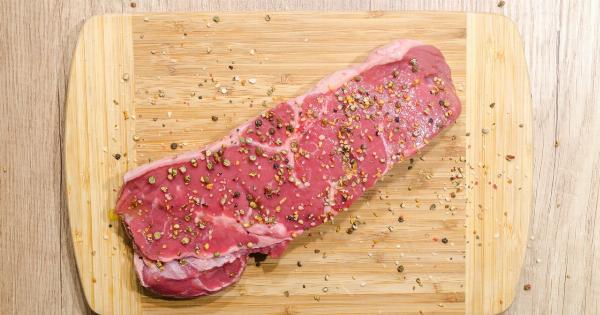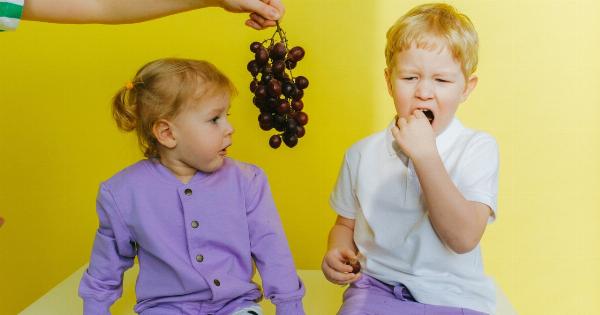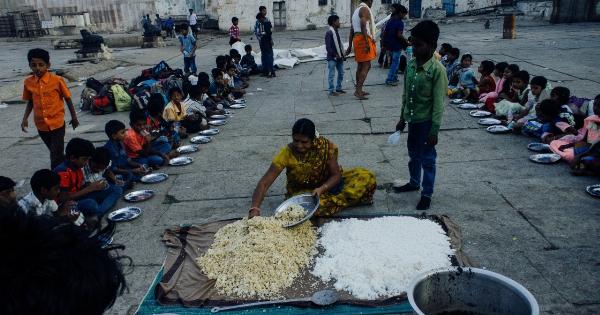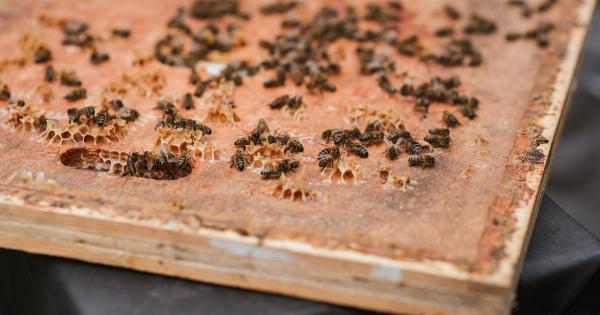Food is an essential part of our lives. We need it to survive, nourish our bodies, and give us energy. However, there are certain foods that can pose unexpected dangers to our health and safety.
While we often associate drowning with water-related accidents, it may come as a surprise that certain foods can also lead to suffocation and, in extreme cases, even death. In this article, we will explore some of the hazardous foods that can cause drowning and how to stay safe around them.
Dangerous Foods that Can Cause Drowning
1. Peanuts
Although peanuts are a popular snack, they can be a choking hazard, especially for young children. Peanuts can easily block the airway and cause suffocation if not chewed properly.
It is crucial to monitor children while they are consuming peanuts to prevent any potential accidents.
2. Grapes
Grapes, particularly when given to young children, are another food that can lead to choking. Their size and smooth texture can make it difficult to dislodge them once they become stuck in the throat.
It is important to cut grapes into smaller pieces to minimize this risk.
3. Hot Dogs
Hot dogs are often a favorite food among both children and adults. However, their cylindrical shape and tendency to break into large, smooth pieces can cause them to get stuck in the throat and obstruct the airway.
Cutting hot dogs into smaller, bite-sized pieces is essential to prevent choking incidents.
4. Hard Candy
Hard candies, especially those with a diameter similar to the airway, are a potential choking hazard. If accidentally swallowed without being thoroughly dissolved, they can block the airway and result in suffocation.
It is essential to avoid giving hard candies to young children or anyone at risk of choking.
5. Marshmallows
Marshmallows are a sticky and soft treat that can easily form a blockage in the throat if consumed improperly.
Their lack of substantial chewing resistance makes them a choking hazard, especially for young children who may not have fully developed their swallowing reflexes. Cutting marshmallows into smaller pieces can help mitigate this risk.
6. Popcorn
Popcorn, a popular and delicious snack, can pose a significant choking risk. The sharp, hard edges of popcorn kernels can get lodged in the throat, leading to suffocation.
It is important to thoroughly chew each kernel and avoid eating popcorn while engaging in activities that may hinder proper chewing.
7. Whole Nuts
Whole nuts, such as almonds or walnuts, are often consumed as a snack or used in baking. However, they can present a choking hazard, particularly for young children.
The hard texture and round shape of these nuts can obstruct the airway if swallowed without proper chewing. To minimize the risk, it is advisable to crush or grind nuts before consumption.
8. Peanut Butter
While peanut butter is a delicious and versatile spread, it can turn into a choking hazard, especially for those with swallowing difficulties. The sticky nature of peanut butter can cause it to get lodged in the throat and block the airway.
It is crucial to take small bites, consume it with other foods, or dilute it with some liquid to reduce the risk of choking.
9. Sticky or Thick Sauces
Sauces like caramel, honey, or thick chocolate syrup can also pose a choking hazard if consumed in excess or without caution.
Their thick consistency can create a blockage in the throat, particularly in young children or individuals with swallowing difficulties. Moderation and careful consumption are key to preventing accidents.
10. Fish with Bones
Fish with bones, such as whole fish or fish fillets, can present a choking hazard if not consumed carefully. The small bones in fish can easily get stuck in the throat and obstruct breathing.
It is important to thoroughly remove the bones or opt for boneless fish to eliminate this risk.
Preventing Food-Related Choking Incidents
While the aforementioned foods pose potential hazards, it’s important to remember that accidents can be prevented by following some simple precautions:.
1. Always supervise young children during meals and snacks.
Being present and vigilant allows you to intervene immediately if a choking incident occurs and provide prompt assistance.
2. Cut food into small, bite-sized pieces.
Reducing the size of food items lessens the risk of choking, especially for young children or individuals with swallowing difficulties.
3. Teach children to chew their food thoroughly.
Instill the habit of proper chewing from an early age to minimize the risk of choking.
4. Avoid rushing while eating.
Eating too quickly can increase the likelihood of choking, as it does not provide sufficient time for proper chewing and swallowing.
5. Stay alert and focused during meals.
Engaging in distracting activities, such as watching television or using electronic devices, can lead to choking incidents as it diverts attention away from the food being consumed.
6. Learn and practice the Heimlich maneuver.
Familiarize yourself with the Heimlich maneuver or abdominal thrusts, an emergency technique used to dislodge an object from a choking individual’s airway. This can be a lifesaving skill to have in case of emergencies.
7. Be cautious when offering potential choking hazards to others.
If you’re hosting an event or preparing food for others, it is important to consider potential choking hazards and choose safer alternatives, especially when serving young children.
Conclusion
While food is necessary for sustenance, caution must be exercised when consuming certain foods that can potentially lead to drowning.
Foods like peanuts, grapes, hot dogs, hard candies, marshmallows, popcorn, whole nuts, peanut butter, sticky or thick sauces, and fish with bones can pose choking risks, particularly for young children and individuals with swallowing difficulties. By taking preventive measures like cutting food into smaller pieces, thoroughly chewing, and staying focused during meals, we can significantly reduce the chances of choking incidents.
Remember, safety and awareness are paramount when it comes to enjoying our favorite foods.






























